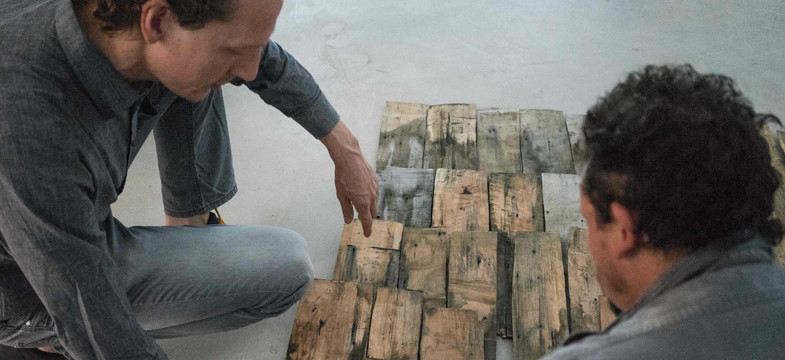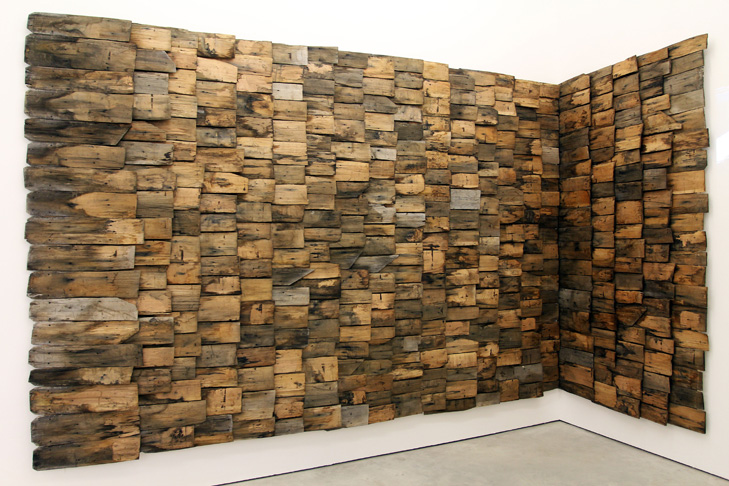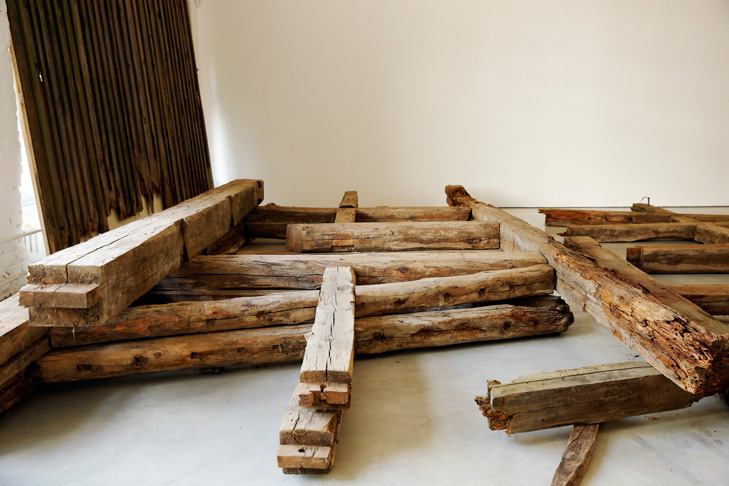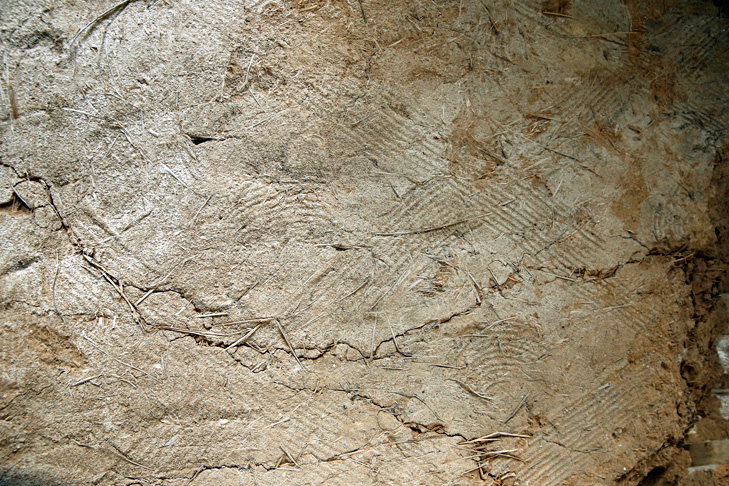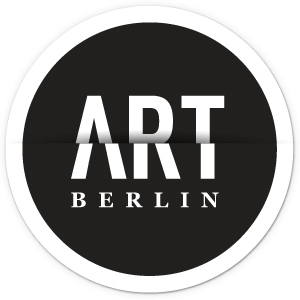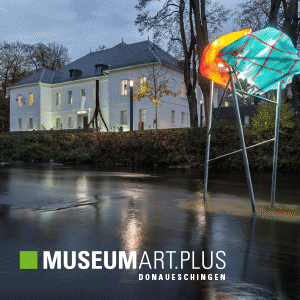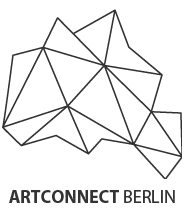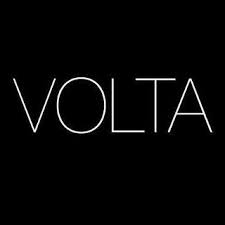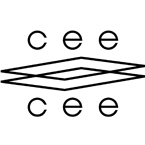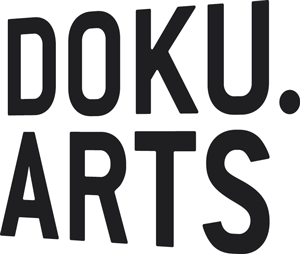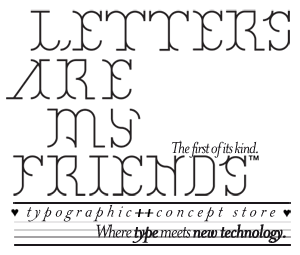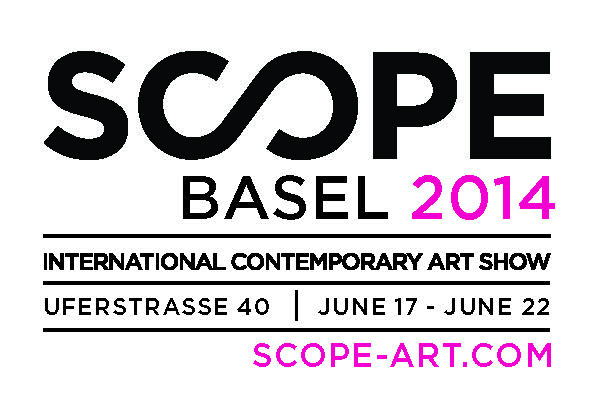The artists became contemporary archeologists
How would life feel when we would commit to the fact that it consists of temporary moments? How would architecture looks like when allowed to fade away after a couple of years? When the local surroundings would determine our way of building and rather then a government that is situated in a big city far away?
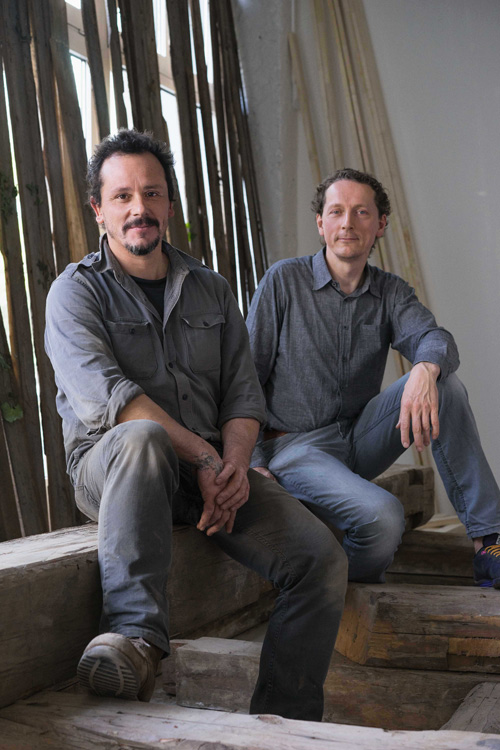
Two artists. Two cultures. Shared thoughts. One passion: the art and politics of contemporary archeology. We meet the well known German artist Olaf H
olzapfel and the Chilenian artist Sebastián Preece in the middle of wood spread on the floor of the Galerie Gebr. Lehmann Berlin. It is right before BERLIN ART WEEK and t
he two artists are about to set their “Housing in Amplitude” installation in place. A piece that is well travelled. Developed as a site-specific installation in the wild nature of the Aysén region in Chile it made his way into the Muséo de Arte Contemporáneo in Santiago de Chile and will now be shown in a new version in Berlin.
The Berlin piece brings together the wooden architectural elements from two different parts of the world: Aysén, Chile meets Brandenburg, Germany. They never been so close.
The German object dates from 1850 and consists of parts of an old food supply storage based on the typical “Fachwerk” construction filled with mud. The “Fachwerk” technique was actually transferred to southern Chile by German colonisers around 1850 and was adapted over time to the rough climate of Patagonia. Some call it the “climate of the devil”.
The Chilenian piece is made of over 800 roof tiles carved out of legna with an axe 100 years later by the coloniers from Aysén to build the Cerrero Castillo School. The only stone building in the area. At the time of our interview, Sebastian Peerce is about to pin the tiles on the wall of the gallery, creating a breathtaking rough beauty piece.
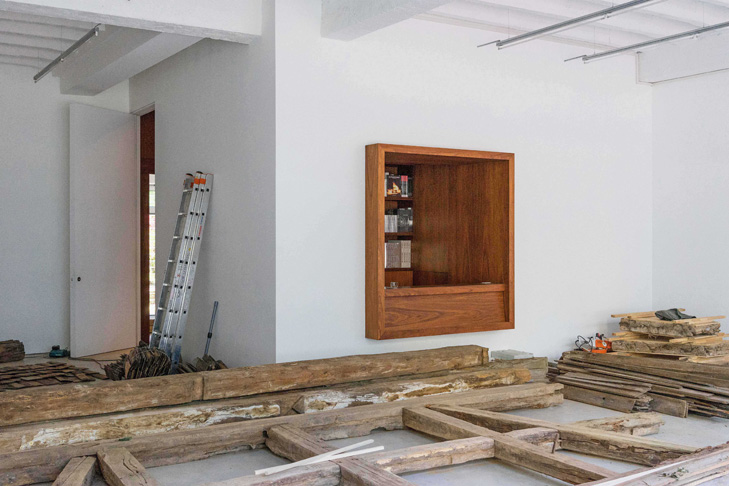
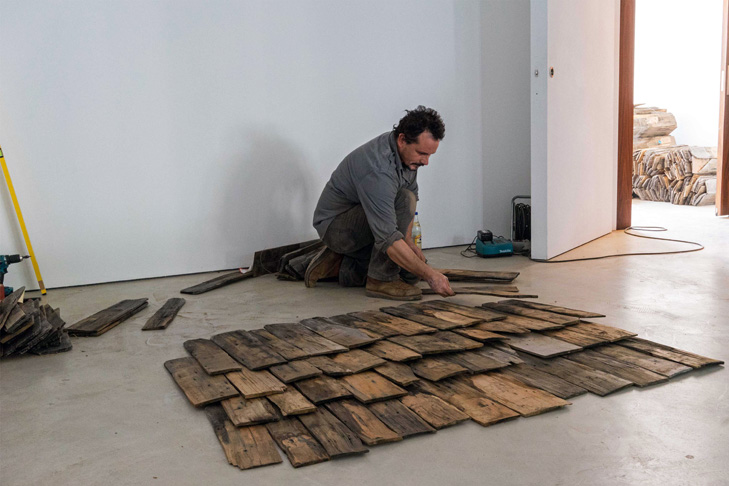
Olaf Holzapfel & Sebastián Preece: Housing in Amplitude
“Housing in Amplitude” is the result of an intense study and encounter with the nomadic culture and architecture of the farmers( arrieros) and the indigenous people in Asyén, Patagonia. Olaf Holzapfel and Sebastián Preece turned themselves into contemporary archeologists to question the distinction between nature and culture. Through the exploration of the traces left by axes, sawmills and fire, they read the modern occupation of the territory and the politics of colonization and centralization in the local architecture. What they point to is the displacement of the indigenous population resulting from colonization, calling the region of Aysén “a uninhabited territory”, ignoring the indigenous communities that inhabited it for 10.000 years.
But this is not the whole story. Olaf Holzapfel:
Homes in Aysén are built to last for 20 instead for 200 years. Life here is temporary and nomadic. The people here come to leave again. The architecture is made to fade away. Nothing is fix rather spontaneous.
Interview with the two artists at Galerie Gebr. Lehmann Berlin
Sebastian, Olaf, how did you approach the project?
Sebastián Peerce:
We developed the plan by doing it, working closely together with the locals. The piece consists of shared decisions and it is actually that process that became the object. It came to us when we got there.
„Housing in Amplitude“ became the first exhibition at the Muséo de Arte Contemporáneo in Santiago de Chile that presented a process and not the finished piece as the theme for the show. Olaf, how did the visitors in Santiago de Chile react to your installation?
Many of them started to remember the landscape as the objects tell the story of the special climate and nature of Aysén. The light, the wind, the shelter. The Indigos don`t aim for massive houses nor cities. Their architecture is flexible and allowed to rotten. They don`t aim to own or to keep. But what they do is to install long fences first. It is rather symbolic as the landscape and space is endless there.
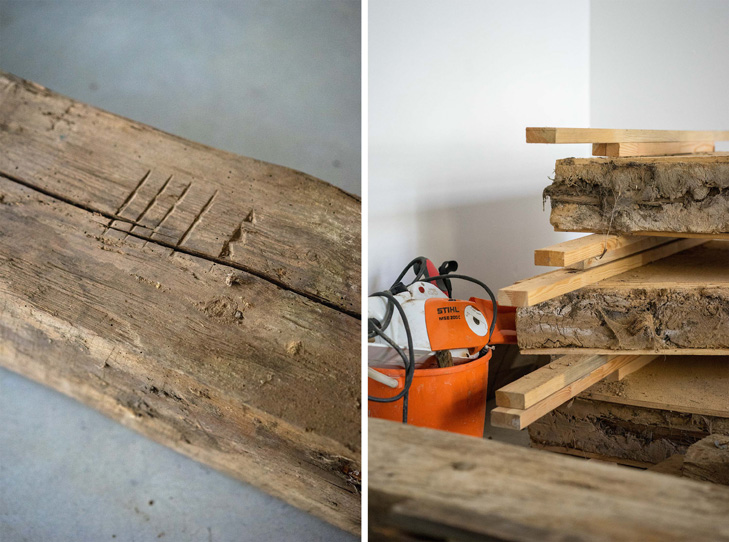
What was the most surprising experience during your four months at the site?
One special moment was when we met the singer of the area. The local troubadour who had written down a lot of stories about life in this part of Patagonia and would sing his poems to us. Everything written down in “Schulhefte”.
You were thinking about constructing a temporary artist studio in the area of Aysén…
Olaf Holzapfel smiles:
For me it is still an idea. I don´t see an artist in residency model, rather a place where artists can just come to work for some time or years.
Where will Housing in Amplitude travel next?
Sebastián Peerce:
We will exhibit next week (September 25 till November 25, 2014) at the 2. Montevideo Biennale.
Thank you gentlemen!
See the exhibition at Galerie Gebr. Lehmann
The exhibition at Galerie Gebr. Lehmann Berlin runs till November 8th, 2014
Galerie Gebr. Lehmann Berlin / Lindenstrasse 35 / 10969 Berlin
For all the details please see the blog of Housing in Amplitude
Fotos: Tobias Laukemper for ARTberlin

